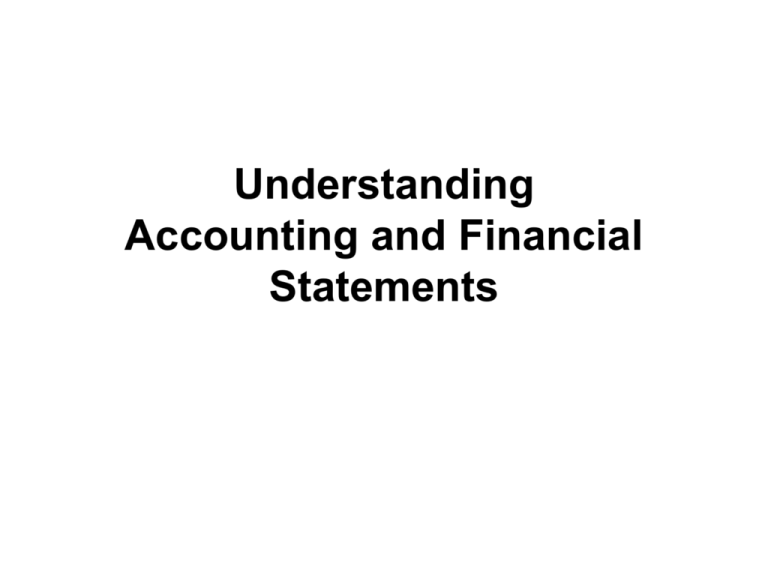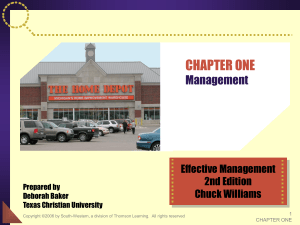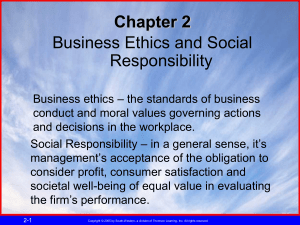
Understanding
Accounting and Financial
Statements
1-1
Copyright © 2005 by South-Western, a division of Thomson Learning, Inc. All rights reserved.
Making Comparisons
● Consider these two cars
● How do you compare
the two cars?
– Miles per hour
– Miles per gallon
– # repairs per mile
– Cost per repair
● These are ratios
1-2
Miles
driven
Elapsed
Time
Gas
used
# of
repairs
Cost of
repairs
Car A
Car B
1000
3000
20 hrs.
50 hrs
50 gal.
200 gal.
2
5
$2000
$4000
Copyright © 2005 by South-Western, a division of Thomson Learning, Inc. All rights reserved.
Financial Ratio Analysis
● Ratio analysis—one of the most commonly
used tools for measuring the firm’s liquidity,
profitability, and reliance on debt financing, as
well as the effectiveness of management’s
use of its resources
– Allows comparisons with other firms and
with the firm’s own past performance
1-3
Copyright © 2005 by South-Western, a division of Thomson Learning, Inc. All rights reserved.
Financial Ratio Analysis
● Financial Ratios and What They Measure
1-4
Copyright © 2005 by South-Western, a division of Thomson Learning, Inc. All rights reserved.
Financial Ratio Analysis
● Liquidity Ratios
– Firm’s ability to meet its short-term
obligations
Current ratio =
current assets / current liabilities
1-5
Copyright © 2005 by South-Western, a division of Thomson Learning, Inc. All rights reserved.
Financial Ratio Analysis
● Profitability Ratios
– Profitability ratios—compare the firm’s
earnings with total sales or investments
– Five important profitability ratios are:
Return on sales (ROS) = profit / sales
Return on assets (ROA) = profit / assets
Return on equity (ROE) = profit / owners equity
Earnings per share (EPS) = profit / # of shares
1-6
Copyright © 2005 by South-Western, a division of Thomson Learning, Inc. All rights reserved.
Financial Ratio Analysis
● Leverage ratios—measures the extent to which
a firm relies on debt financing
– Debt ratio = total liabilities / total assets
– Leverage ratio = total assets / owners’ equity
● Activity ratios—measure the effectiveness of
management’s use of the firm’s resources
– Inventory turnover ratio—indicates the
number of times merchandise moves through
a business
= COGS / inventory
1-7
Copyright © 2005 by South-Western, a division of Thomson Learning, Inc. All rights reserved.
Budgeting
● Budget—a planning and controlling tool that
reflects the firm’s expected sales revenues,
operating expenses, and cash receipts and
outlays
– Quantifies the firm’s plans for a specified
future period
– Serves as a financial blueprint
– Standard for comparison against actual
performance
● Cash Budget
1-8
Copyright © 2005 by South-Western, a division of Thomson Learning, Inc. All rights reserved.
In Class
● Compare the financials of:
– Anheuser-Busch
– Apple
– Microsoft
1-9
Copyright © 2005 by South-Western, a division of Thomson Learning, Inc. All rights reserved.












